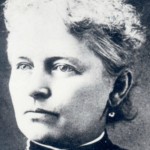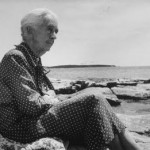On January 19, 1859, the Indiana General Assembly convened a special joint session—a highly unusual occurrence—in order to hear a highly unusual request.
A group of over one thousand women and men from Wayne County had presented the legislature with a petition calling for women’s rights. For the first time in the state’s history, women would be addressing the members of the General Assembly, and the State House was packed with both women and men for the occasion. The former were described by one writer as a “field of crinoline” and a “surging mass of pantaloons,” while their male counterparts were “rough, outspoken and boisterous.” (pp. 348-349)
Mary F. Thomas presented the petition after pleading with the very unruly crowd to listen in a dignified matter. She laid out her arguments for equal rights for women logically and coherently. Thomas was followed by Mary B. Birdsall, who spoke in favor of women’s suffrage. Finally, the General Assembly heard from Agnes Cook, who advocated for temperance—a cause near and dear to the hearts of many women in the nineteenth century.
After the three women spoke, members of the Senate filed out of the House chamber, leaving the members of the House of Representatives and a crowd of women spectators facing each other. The House adjourned rather than conduct business in front of their female audience. Some of the lawmakers who remained in the chamber ridiculed the women and joked with each other, calling the session a matter of “jollification.”
Newspaper accounts suggested that the subject of female suffrage would best have been left alone. The editors of the Indiana Weekly State Journal wrote: “We think if the women were granted all they ask, they would soon wish . . . that they were restored to their former condition” (p. 356).
Despite the lack of any meaningful action, Thomas, Birdsall, and Cook had set a precedent. Twelve years later, in 1871, Hoosier women again addressed the legislature in a joint session, seeking the right to vote. Amanda Way and Emma Swank’s efforts culminated in a joint senate resolution proposing to amend the state constitution to allow women over the age of twenty-one to vote.
Although the resolution went nowhere, lawmakers in the 1870s now took the issue more seriously than they did in the 1850s—thanks in part to the efforts of a few brave souls.
A Moment of Indiana History is a production of WFIU Public Radio in partnership with the Indiana Public Broadcasting Stations. Research support comes from Indiana Magazine of History published by the Indiana University Department of History.
Source Article: Pat Creech Scholten, “A Public ‘Jollification’: The 1859 Women’s Rights Petition before the Indiana Legislature,” Indiana Magazine of History 72, no. 4 (Dec. 1976): 347-359.






















